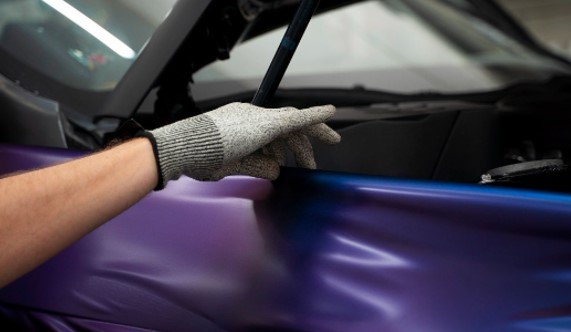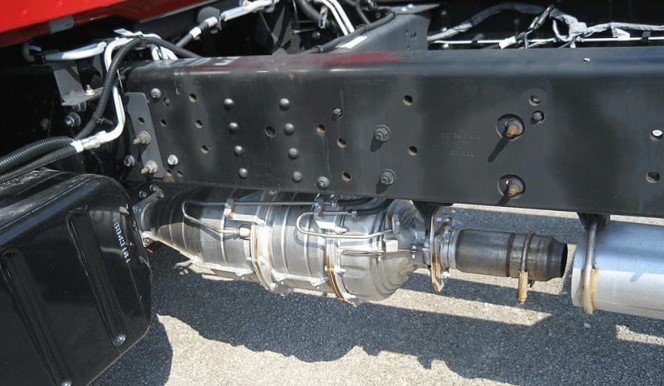10 Car Maintenance Tasks to Do Every Spring
Spring is the perfect time to give your car a little TLC to keep it running properly. With the cold and snow behind you and the prospect of spring or summer road trips, you want to make sure that your car is safe to drive and ready to get you from point A to point B. Even if there are no dash lights indicating the need for service, there are still several necessary basic maintenance tasks that will help you save money in the long run by avoiding more serious repairs in the future. Plus, if something is wrong, you can catch it before it becomes a bigger problem or leaves you stranded on the side of the road. Continue reading to identify a few key car maintenance tasks to perform this spring.
RELATED: 13 Hacks Every Car Owner Should Know
1. Get an Oil Change
If you haven’t recently had your oil changed, the start of spring is a great time to schedule one. Keeping up with routine oil changes — typically every 5,000 to 7,000 miles depending on your car — helps your car continue to operate properly. Oil changes are also important for keeping debris from gathering in the engine and pulling too much heat from the combustion chamber, which can lead to more serious problems. If you know how to change a car’s oil, then you might be able to do this task yourself. Otherwise, take your car into a service center for this important routine maintenance task.
RELATED: 7 Car Sounds You Should Never Ignore
2. Check the Tire Pressure
Tire pressure often drops during the winter. When the temperatures are cold outside, it can cause tires to lose several pounds of pressure. Keeping an eye on tire pressure and making sure it isn’t too low can help prevent the tires from getting overheated and blowing out. If this happens, not only could it put you at risk for an accident, but you’ll just end up wasting money on your car by buying new tires that would have otherwise been unnecessary.
RELATED: The Best Tire Pressure Gauges for Car Owners
3. Check the Windshield Wiper Blades
Now that the ice and snow are behind you, it is also a good idea to check your windshield wiper blades to see if they need to be replaced. The winter months can cause a lot of damage to the wipers. If you think about it, they’re often caked in ice, exposed to frigid temperatures, or nicked by the scraper as you clear the snow-covered windshield. This can cause the wipers to crack or bend. If you see any signs of damage, it’s time to purchase a new set of windshield wiper blades. Fortunately, replacing the wipers is a relatively simple task that you should be able to do yourself by following the directions in your vehicle’s manual.
4. Test All the Lights
Testing your car lights is a simple, yet important, task that often gets overlooked. Driving with a light out can be dangerous. Plus, it could get you pulled over, and you may even end up with a ticket. Take a few minutes of your time to turn on your vehicle lights and turn signals and walk around and check that everything is working. You might want to enlist the help of a friend to stand behind the car as you press the brake pedal to make sure that the brake lights are working. Once you’ve finished checking the exterior lights, don’t forget to make sure all of the interior lights are working too.
RELATED: 13 Essential Tools for DIY Auto Maintenance
5. Wash Your Car
Washing your car does more than just help it look nice and clean. It also helps remove debris from the surface that could be causing damage to the finish. Cleaning your car in the early spring is especially important after driving around on salt-covered roads throughout the winter. The salt can damage the paint or cause the metal to corrode. Whether you decide to wash the car yourself or take it into a car wash, make sure that the undercarriage also gets cleaned to remove salt and other debris that is covering it.
RELATED: 14 Things You Never Thought to Keep in Your Car
6. Wax Your Car
After you’ve washed your car, it is time to wax it. Adding a coat of wax will provide a layer of protection for the car’s paint against rain, tree droppings, bird droppings, UV rays, and other elements that could damage the finish. If possible, try to keep up with waxing the car at least once a month to continue to protect its finish.
RELATED: 9 Ways to Maximize Storage in Your Car
7. Clean Your Car’s Interior
Now that you’ve taken the time to get the car’s exterior cleaned up and waxed, it is time to move on to the interior of the car. During the winter, it is easy for our cars to get cluttered with extra sweaters, jackets, blankets, snow and ice scrapers, and other items that we didn’t feel like hauling back inside because the weather was so cold. Now that it is warmer outside, take a few minutes to clear out your car and put things back away where they belong. After getting rid of trash and any items that don’t belong in the vehicle, dust and vacuum the inside and clean the inside of the windows.
RELATED: 15 Genius Tricks for Keeping Your Car Clean
8. Replace the Cabin Filter
Cabin filters should be replaced every 15,000 to 30,000 miles or so. If it has been longer than that since you’ve replaced yours, add this task to your spring maintenance to-do list. If the filter is dirty, it will let more pollen, dust, and other allergens into your car. Keeping these out of the car is important for your health, but will be especially important if you deal with spring allergies.
RELATED: 12 Maintenance Mistakes That Shorten the Life of Your Car
9. Test the Air Conditioning
In many parts of the country, spring temperatures aren’t warm enough to warrant turning on the air conditioning. However, it won’t be long until summer arrives, and you want to be confident that your car’s AC is working. Take a few minutes to turn the air conditioning on full blast and make sure that cold air comes out. If the AC isn’t working properly, you will have time to get it fixed before you really need it in a few months.
RELATED: The Best Battery Testers
10. Check the Battery
Cold and freezing weather can cause a battery to drain more quickly. You’ll want to check your battery in the spring to make sure it isn’t close to the end of its life. The last thing you want is for your car not to start when you really need to get to work or anywhere else. To test a battery, you’ll need a multimeter. Connect the multimeter’s red lead to the battery’s positive terminal and the black lead to the negative terminal. Check the reading. Consider being proactive and replacing your battery if the number displayed is less than 12.4 volts.
















